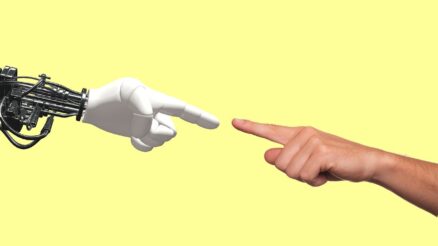In the modern workplace, the ability to think critically is more than just a valuable asset—it’s a necessity for success.
According to a recent survey by the World Economic Forum, 36% of employers consider complex problem-solving skills, a key component of critical thinking, as the top skill they seek in their workforce.
This blog post explains this top skill – critical thinking skills in the workplace and its core components and what is importance of having this skill in the modern workplace.
With useful practical tips, this blog post also explains how professionals can develop and boost their critical thinking skills.
Let’s start reading and check this out this interesting concept.
Definition of critical thinking
Critical thinking is a cognitive process characterized by the ability to analyze, evaluate, and synthesize information in a purposeful and reflective manner.
It involves the careful consideration of evidence, arguments, and various perspectives to make reasoned and well-informed decisions.
Critical thinking goes beyond simply accepting information at face value; instead, it encourages individuals to question assumptions, challenge assumptions, and engage in independent and objective inquiry.
This skill set encompasses a range of abilities, including problem-solving, logical reasoning, effective communication, and the capacity to make sound judgments.
Five Core components of critical thinking
The five components form the backbone of critical thinking and these components make it a structured and comprehensive approach.
Understanding the five core components of critical thinking help us to understand this cognitive skill and its broader implications in decision-making and problem-solving.
Here are 5 core components of critical thinking.
1. Analysis:
Analysis is a fundamental component of critical thinking.
It involves breaking down complex issues into manageable parts to identify patterns, trends, or crucial elements.
Through analysis, individuals can discern the significance of information, recognize potential biases, and uncover hidden assumptions.
This analytical skill empowers professionals to make well-informed decisions by understanding the intricacies of a situation and grasping the implications of various factors.
2. Interpretation:
Interpretation is about making sense of information, finding meaning in data, and turning it into clear insights.
Critical thinkers look at the context of information, consider different points of view, and understand the intended message.
This skill is essential for dealing with uncertainty and grasping the significance of information in a particular situation.
Interpretation helps people look beyond the basic data and uncover deeper insights, which is useful for making decisions and communicating effectively.
3. Inference:
Inference means drawing logical conclusions from the information and evidence at hand.
Critical thinkers use inference to go beyond what is directly stated, making well-thought-out assumptions and predictions.
This aspect involves thinking about the consequences of information and finding logical connections between different pieces of data.
In the workplace, the ability to make sound inferences is essential for anticipating outcomes, predicting trends, and formulating strategies based on a comprehensive understanding of the available information.
4. Explanation:
Explaining is the ability to express one’s thought process, reasoning, or the logic behind a specific decision or conclusion in a clear and concise manner.
Critical thinkers not only reach well-founded judgments but also possess the skill to effectively communicate these insights to others.
Through clear explanations, individuals can convey complex ideas, facilitate discussions, and contribute to a culture of open communication in the workplace.
5. Problem-solving:
Critical thinking culminates in problem-solving, where individuals apply their analytical, interpretative, inferential, and explanatory skills to address challenges and make decisions.
Problem-solving is an active and iterative process that involves defining problems, generating and evaluating potential solutions, and implementing the most effective course of action.
Critical thinkers approach problem-solving with creativity, adaptability, and a willingness to explore unconventional solutions.
This component is particularly crucial in dynamic work environments were navigating complexities and finding innovative solutions are essential for success.
Importance of critical thinking in the workplace
Critical thinking is of paramount importance in the workplace for several reasons, as it serves as a foundational skill that enhances individual and organizational effectiveness.
Here are key reasons highlighting the significance of critical thinking in the workplace:
Informed Decision-Making:
Critical thinking enables individuals to analyze information, weigh evidence, and make informed decisions.
In a professional setting, decision-making often involves complex factors, and individuals with strong critical thinking skills are better equipped to navigate uncertainties and choose the most effective course of action.
Problem-Solving:
In any workplace, challenges and problems are abundant that demand creative and efficient solutions.
Critical thinking allows employees to approach problems systematically, identify root causes, and develop innovative solutions.
This skill is particularly valuable in dynamic industries where adaptability and creative problem-solving are essential.
Effective Communication:
Effective communication is essential in any workplace.
Critical thinkers have the ability to express their thoughts, ideas, and reasoning in a clear and compelling manner.
They can also engage in constructive discussions, consider different viewpoints, and communicate effectively with diverse stakeholders.
Innovation and Adaptability:
In today’s rapidly evolving business landscape, organizations need to innovate and adapt to stay competitive.
Critical thinkers are more likely to embrace change, explore new ideas, and contribute to an environment that fosters innovation.
They are open to exploring alternative solutions and challenging the status quo.
Efficient Planning and Execution:
Critical thinking is instrumental in strategic planning and the effective execution of tasks.
Individuals who can analyze situations, establish priorities, and devise well-thought-out plans are more likely to achieve their goals, contributing to the overall success of the organization.
Quality Analysis and Evaluation:
Critical thinkers possess the ability to assess the quality and relevance of information. This is particularly crucial in a world inundated with data.
Employees who can discern between reliable and unreliable information contribute to better decision-making and organizational effectiveness.
Team Collaboration:
Teams benefit from individuals who can critically evaluate ideas, contribute thoughtful insights, and work collaboratively towards common goals.
Teams thrive when individuals can critically evaluate ideas, contribute thoughtful insights, and collaborate toward common goals.
Critical thinkers foster a positive team dynamic by promoting open communication, constructive feedback, and shared problem-solving.
Ethical Decision-Making:
Critical thinking plays a crucial role in ethical decision-making.
It enables individuals to carefully consider the ethical implications of their choices, ensuring that decisions align with organizational values and ethical standards.
Examples of Critical thinking in workplace
These examples illustrate how critical thinking is not a theoretical concept but a practical and invaluable skill in the workplace, applicable across various scenarios and roles.
Decision-Making in a Crisis:
Imagine a senior executive facing a sudden crisis that could impact the entire organization.
Critical thinking comes into play as they analyze the situation, interpret available information, make inferences about potential outcomes, and explain their decision-making process.
In this scenario, critical thinking enables the executive to navigate the crisis with a level-headed approach, considering various factors before deciding on a course of action.
Project Management and Problem-Solving:
Consider a scenario where a project manager faces unforeseen challenges in the implementation of a crucial project.
Critical thinking skills allow the manager to analyze the root causes of the issues, interpret the implications for project timelines and goals, make inferences about potential solutions, and explain the chosen strategy to the team.
The ability to problem-solve through critical thinking ensures the project stays on track and meets its objectives.
Effective Communication and Conflict Resolution:
In a team setting, conflicts may arise due to differing perspectives or misunderstandings.
Critical thinking helps team members analyze the underlying issues, interpret each other’s viewpoints, make inferences about the root causes of the conflict, and explain their concerns.
By applying critical thinking to communication, individuals can engage in constructive dialogue, find common ground, and contribute to conflict resolution within the team.
Strategic Planning and Innovation:
An organization aims to enter a new market and needs to develop a strategic plan.
Imagine an organization looking to enter a new market and needing to develop a strategic plan.
Critical thinking becomes crucial in analyzing market trends, interpreting consumer behavior, making educated guesses about potential challenges and opportunities, and explaining the reasoning behind the chosen market entry strategy.
Integrating critical thinking into strategic planning not only fosters innovation but also equips organizations to adapt to the ever-changing dynamics of the market.
Quality Improvement in Processes:
In a manufacturing setting, consider a scenario where a quality control manager identifies a recurring issue with a product.
Critical thinking becomes essential as the manager analyzes production processes, interprets data on defects, makes educated guesses about potential causes, and explains the proposed changes to improve quality.
Applying critical thinking to process improvement ensures that decisions are well-founded and contribute to long-term efficiency and product quality.
Employee Training and Development:
HR professionals tasked with enhancing employee skills use critical thinking to analyze the training needs of the workforce, interpret the relevance of different training programs, make inferences about the potential impact on employee performance, and explain the chosen development initiatives.
Critical thinking in this context ensures that training efforts align with organizational goals and contribute to the professional growth of employees.
How to Develop Critical Thinking Skills in the Workplace?
This holistic strategy ensures that critical thinking becomes not just a skill to acquire but a fundamental aspect of the organizational culture, contributing to enhanced decision-making and problem-solving capabilities across the workforce.
Here are some steps that can be taken to develop critical thinking skills in the workplace.
1. Continuous Learning and Education:
Promoting continuous learning and education is essential for nurturing critical thinking skills in the workplace. This includes offering employees access to workshops, training programs, and online courses tailored to foster critical thinking development.
Workshops could focus on problem-solving methodologies, logical reasoning, and decision-making processes.
These initiatives empower employees to enhance their analytical abilities, interpret information effectively, and continually refine their critical thinking skills.
By investing in ongoing education, organizations demonstrate a commitment to fostering a culture of intellectual growth and adaptability.
2. Fostering a Culture of Curiosity:
Creating a workplace culture that values curiosity is essential for nurturing critical thinking skills.
This involves promoting an environment where asking questions is encouraged, and diverse perspectives are welcomed.
Leaders play a pivotal role in fostering curiosity by modeling inquisitive behavior, acknowledging and rewarding employees for their curiosity-driven contributions, and creating platforms for open discussions.
Cultivating curiosity not only stimulates critical thinking but also instills a proactive mindset that seeks to understand complexities and explore innovative solutions.
3. Practicing Reflection and Self-Awareness:
Critical thinking is strengthened through reflective practices and self-awareness.
Employees can engage in journaling, self-assessment exercises, and regular reflection sessions to evaluate their thinking processes, decision-making patterns, and problem-solving approaches.
Encouraging individuals to critically assess their own thoughts and actions fosters a continuous improvement mindset.
Additionally, feedback from supervisors and peers can provide valuable insights, contributing to the ongoing development of an individual’s critical thinking skills.
Employees can participate in activities such as journaling, self-assessment exercises, and regular reflection sessions to assess their thinking processes, decision-making patterns, and problem-solving approaches. Encouraging individuals to critically evaluate their thoughts and actions fosters a mindset of continuous improvement.
Furthermore, receiving feedback from supervisors and peers offers valuable insights, contributing to the continual development of an individual’s critical thinking skills.
4. Problem-Solving Exercises and Case Studies:
Practical application is crucial for honing critical thinking skills.
Organizations can incorporate problem-solving exercises and case studies into training programs or team-building activities.
These exercises present real-world scenarios that require individuals or teams to analyze information, interpret data, make inferences, and develop solutions.
Engaging in hands-on problem-solving not only reinforces theoretical knowledge but also allows employees to apply critical thinking in a contextualized and meaningful way.
5. Integrating Critical Thinking into Daily Work:
To truly embed critical thinking into the workplace culture, organizations should integrate it into daily work practices.
For a genuine integration of critical thinking into the workplace culture, organizations should weave it into daily work practices.
This involves incorporating critical thinking skills into job roles and responsibilities, making it a natural part of employees’ professional routines.
Leaders can encourage employees to share their thought processes during meetings, presentations, or project discussions, creating opportunities for collective critical thinking.
By making critical thinking an integral aspect of daily work, organizations foster a mindset where analytical thinking is valued and consistently applied.
6. Taking small steps or act small:
Taking small steps or acting in a measured, incremental manner is a effective approach to developing critical thinking in the workplace.
This strategy involves encouraging employees to break down complex problems or projects into smaller, more manageable components.
By addressing one aspect at a time, individuals can focus on detailed analysis, interpretation, and inference for each segment.
This step-by-step method not only enhances their critical thinking skills but also allows for continuous reflection and adjustment as they progress.
The act-small approach fosters a habit of thoughtful consideration, enabling employees to fine-tune their problem-solving abilities and make well-informed decisions at each stage of a task or project.
Moreover, it cultivates a mindset that values the journey of critical thinking, emphasizing the significance of each small step toward achieving larger goals in the dynamic landscape of the workplace.
Final Words
In wrapping up, understanding the five key components—analysis, interpretation, inference, explanation, and problem-solving—helps us grasp the essence of critical thinking skills in the workplace. These components work together like tools in a toolbox, allowing us to break down complex problems, understand their meaning, make logical predictions, explain our decisions clearly, and ultimately solve challenges. The importance of these components lies in their combined strength, empowering individuals to think critically and make informed decisions.



